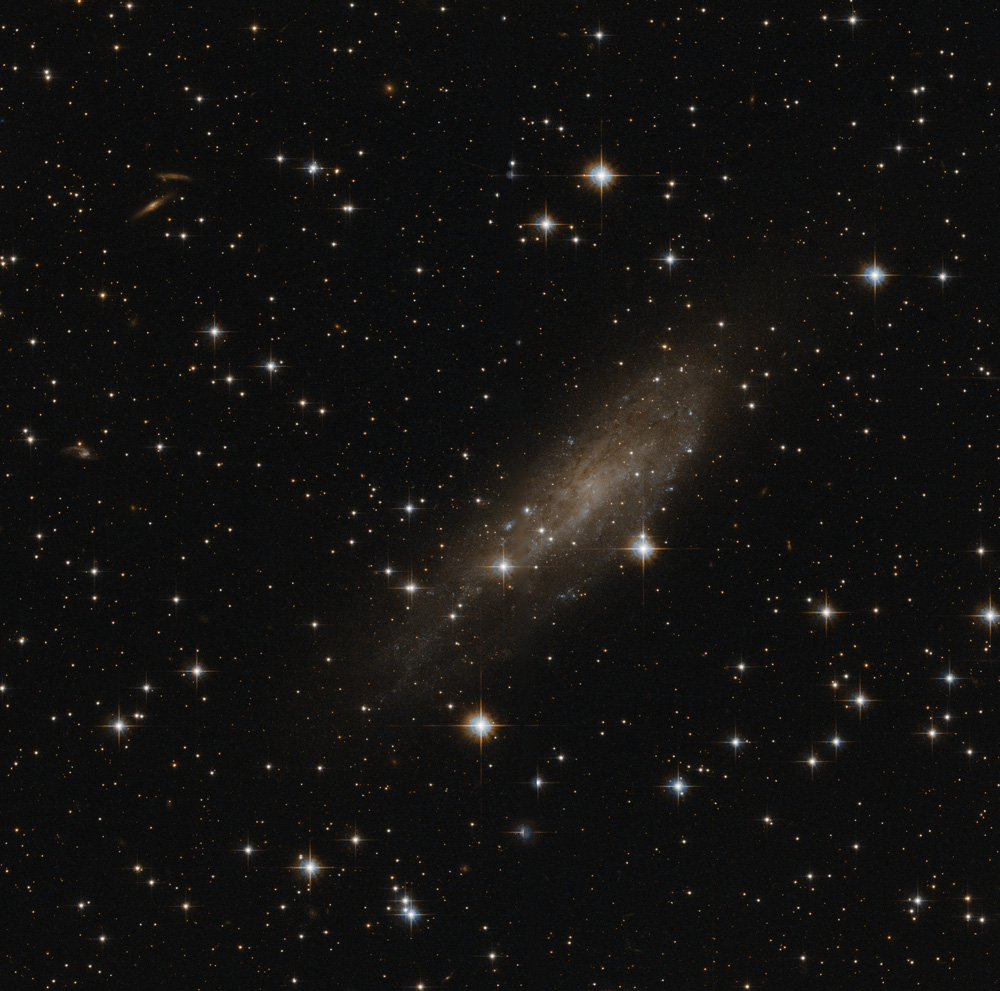
UGC 11131 (2014)
I confess that I found it hard to be motivated to put the necessary hours into processing this one. If there is such a thing as an ugly galaxy, I guess this is it for me. For all I know, the best science came out of this one. I find it very difficult to visually distinguish small foreground stars from any potential globular clusters. The point spread function should differ significantly enough that any scientist worth his salt should be able to take a few measurements and make such a determination. Sounds like a boring job, though. Maybe there’s a way to tell a computer to do it for you.
Usual disclaimer / disclosure: Chip gap (vertical bar across the image) is filled with fake stuff.
This image is possible thanks to those responsible for Proposal 10550.
Red: HST_10550_05_ACS_WFC_F775W_sci
Green: Pseudo
Blue: HST_10550_05_ACS_WFC_F475W_sci
North is NOT up. It’s 3.6° clockwise from up.
Copyright information:
Hubble data is public domain, but I put a lot of work into combining it into beautiful color images. The minimal credit line should read: NASA / ESA / J. Schmidt

This work is licensed under a Creative Commons Attribution 3.0 Unported License.


